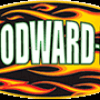Choosing the press brake involves planning and several considerations such as the ones mentioned below:
• Tonnage: This is referred to as the bending capacity of a press brake. Hence, is the most important consideration to be made while selecting the press brake for your facility:
o Type of Material
o Thickness of Material
o Length of the Material
o Process Employed
o Die Opening
If you are unable to calculate the tonnage of the machine then it is always better to approach the manufacturer whom you are considering. They will help you calculate the bending force of every task.
• Length of the Material to be Processed: Next, consider the maximum length of the sheet metal to be processed. If you wish to bend the sheet metal by employing multiple stations on the press brake then you need to alter the length of each station. For maximum efficiency, you can select a press brake that allows you bending short and long sides effectively through two stations. This will reduce your processing time.
• Daylight or Open Height: The choice of open height will depend on several factors such as the type of metal bending to be performed, the sheet metal bending tools used, and the stroke needed for the activity. For instance, if a customer is using a press brake with a standard daylight, he may find difficulties to move the finished part while bending flanges that are large in size.
• Deflection: You must consider the deflection that a machine may undergo. For instance, a 5-foot machine will endure four times less deflection in the ram and bed than a 10-foot machine when subjected to the same load.
In addition to the above-mentioned factors, it is important to check on other factors such as the desired angular accuracy, type of tooling used, flange width, and the workpiece used. By now you might have understood how a press brake can be an asset to your facility. Hence, it is important that you source it from a reliable manufacturer or supplier. Woodward Fab provides a vast range of press brakes.

